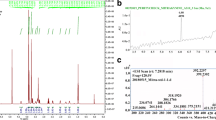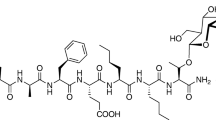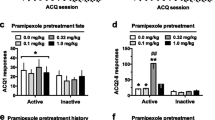Abstract
Rationale and objectives
Although delta/mu receptor interactions vary as a function of behavioral endpoint, there have been no assessments of these interactions using assays of pain-depressed responding. This is the first report of delta/mu interactions using an assay of pain-depressed behavior.
Methods
A mult-cycle FR10 operant schedule was utilized in the presence of (nociception) and in the absence of (rate suppression) a lactic acid inflammatory pain-like manipulation. SNC80 and methadone were used as selective/high efficacy delta and mu agonists, respectively. Both SNC80 and methadone alone produced a dose-dependent restoration of pain-depressed responding and dose-dependent response rate suppression. Three fixed ratio mixtures, based on the relative potencies of the drugs in the nociception assay, also produced dose-dependent antinociception and sedation. Isobolographic analysis indicated that all three mixtures produced supra-additive antinociceptive effects and simply additive sedation effects.
Conclusions
The therapeutic index (TI) inversely varied as a function of amount of SNC80 in the mixture, such that lower amounts of SNC80 produced a higher TI, and larger amounts produced a lower TI. Compared to literature using standard pain-elicited assays, the orderly relationship between SNC80 and TI reported here may be a unique function of assessing pain-depressed behavior.



Similar content being viewed by others
References
Adams JU, Tallarida RJ, Geller EB, Adler MW (1993) Isobolographic superadditivity between delta and mu opioid agonists in the rat depends on the ratio of compounds, the mu agonist and the analgesic assay used. J Pharmacol Exp Ther 266:1261–1267
Altarifi AA, Rice KC, Negus SS (2015) Effects of u-opioid receptor agonists in assays of acute pain-stimulated and pain-depressed behavior in male rats: role of μ-agonist efficacy and noxious stimulus intensity. J Pharmacol Exp Ther 352:208–217
Anand JP, Boyer BT, Mosberg HI, Jutkiewicz EM (2015) The behavioral effects of a mixed efficacy antinociceptive peptide, VRP26, following chronic administration in mice. Psychopharm 233:2479–2487
Basbaum AI, Fields HL (1984) Endogenous pain control systems: brainstem spinal pathways and endorphin circuitry. Annu Rev Neurosci 7:309–338
Bee LA, Dickenson AH (2007) Rostral ventromedial medulla control of spinal sensory processing in normal and pathophysiological states. Neuroscience 147:786–793
Bernard JR, Frost JA, Hammeke TA, Bellgowan PS, Rao SM, Cox RW (1999) Conceptual processing during the conscious resting state. A functional MRI study. J Cog Neurosci 11:80–95
Bilsky EJ, Calderon SN, Wang T, Bernstein RN, Davis P, Hruby VJ, McNutt RW, Rothman RB, Rice KC, Porreca F (1995) SNC80, a selective, nonpeptidic and systemically active opioid delta agonist. J Pharmacol Exp Ther 273:359–366
Chung PC, Boehrer A, Stephan A, Matifas A, Scherrer G, Darcq E, Befort K, Kieffer BL (2015) Delta opioid receptors expressed in forebrain GABAergic neurons are responsible for SNC80-induced seizures. Behav Brain Res 278:429–434
Costantino CM, Gomes I, Stockton SD, Lim MP, Devi LA (2012) Opioid receptor heteromers in analgesia. Exp Rev Molec Med 14:e9
Do Carmo GP, Stevenson GW, Carlezon WA, Negus SS (2009) Effects of pain- and analgesia-related manipulations on intracranial self-stimulation in rats: further studies on pain-depressed behavior. Pain 144:170–177
Dykstra LA, Granger AL, Allen RM, Zhang X, Rice KC (2002) Antinociceptive effects of the selective delta opioid agonist SNC80 alone and in combination with mu opioids in the squirrel monkey titration procedure. Psychopharm 163:420–429
Erbs E, Faget L, Scherrer G, Matifas A, Filliol D, Vonesch JL, Koch M, Kessler P, Hentsch D, Birling M, Koutsourakis M, Vasseur L, Veinante P, Kieffer BL, Massotte D (2015) A mu-delta opioid receptor brain atlas reveals neuronal co-occurrence in subcortical networks. Brain Struct Funct 220:677–702
Gorman AL, Elliott KJ, Inturrisi CE (1997) The d- and l-isomers of methadone bind to the non-competitive site on the N-methyl-D-aspartate (NMDA) receptor in rat forebrain and spinal cord. Neurosci Lett 223:5–8
IOM (Institute of Medicine) (2011) Relieving pain in America: a blueprint for transforming prevention, care, education, and research. The National Academies Press, Washington, DC
Jiang Q, Mosberg HI, Porreca F (1990) Selective modulation of morphine antinociception, but not development of tolerance, by ∂ receptor agonists. Eur J Pharmacol 186:137–141
Jutkiewicz EM, Kaminsky ST, Rice KC, Traynor JR, Woods JH (2005) Differential behavioral tolerance to the δ-opioid agonist SNC80 [(+)-4-[(αR)-α-[(2S,5R)-2,5-Dimethyl-4-(2-propenyl)-1-peperazinyl]-(3-methoxyphenyl)methyl]-N,N-diethylbenzamide) in Sprague-Dawley rats. J Pharmacol Exp Ther 315:414–422
Jutkiewicz EM, Baladi MG, Folk JE, Rice JC, Woods JH (2006) The convulsive and electroencephalographic changes produced by nonpeptidic delta-opioid agonists in rats: comparison with pentylenetetrazol. J Pharmcol Exp Ther 317(3):1337–1348
Kandel ER, Schwartz JH, Jessell TM, Siegelbaum SA, Hudspeth AJ (2013) Principles of neural science, 5th edn. McGraw Hill, NY
Leitl MD, Potter DN, Cheng K, Rice KC, Carlezon WA, Negus SS (2014) Sustained pain-related depression of behavior: effects of intraplantar formalin and complete freund’s adjuvant on intracranial self-stimulation (ICSS) and endogenous kappa opioid biomarkers. Molec. Pain 10:62
Lemberg K, Kontinen VK, Viljakka K, Kylanlahti I, Yli-Kauhaluoma J, Kalso E (2006) Morphine, oxycodone, methadone and its enantiomers in different models of nociception in the rat. Anesth Analg 102:1768–1774
Lowery JJ, Raymond TJ, Giuvelis D, Bidlack JM, Polt R, Bilsky EJ (2011) In vivo characterization of MMP-2200, a mixed ∂/μ opioid agonist, in mice. J Pharmacol Exp Ther 336:767–778
Margolis EB, Fujita W, Devi LA, Fields HL (2017) Two delta opioid receptors subtypes are functional in single ventral tegmental area neurons, and can interact with the mu opioid receptor. Neuropharmacology 123:420–432
Martin TJ, Buechler NL, Kahn W, Crews JC, Eisenach JC (2004) Effects of laparotomy on spontaneous exploratory activity and conditioned operant responding in the rat. Anesth 101:191–203
Matsumoto K, Narita M, Muramatsu N, Nakayama T, Misawa K, Kitajima M, Tashima K, Devi L, Suzuki T, Takayama H, Horie S (2014) Orally active opioid μ/∂ dual agonist MGM-16, a derivative of the indole alkaloid mitragynine, exhibits potent antiallodynic effect on neuropathic pain in mice. J Pharmacol Exp Ther 348:383–392
Mosberg HI, Yeomans L, Anand JP, Porter V, Sobczyk-Kojiro K, Traynor JR, Jutkiewicz EM (2014) Development of a bioavabilable μ opioid receptor (MOPr) agonist, ∂ opioid receptor (DOPr) antagonist peptide that evokes antinociception without development of acute tolerance. J Med Chem 57:3148–3153
Negus SS, Vanderah TW, Brandt MR, Bilsky EJ, Becerra L, Borsook D (2006) Preclinical assessment of candidate analgesic drugs: recent advances and future directions. J Pharmacol Exp Ther 319:507–514
Negus SS, Neddenriep B, Altarifi AA, Carroll FI, Leitl MD, Miller LL (2015) Effects of ketoprofen, morphine, and kappa opioids on pain-related depression of nesting in mice. Pain 156:1153–1160
Narita M, Suzuki T (2003) Delta opioid receptor-mediated antinociception/analgesia. In: Chang KJ, Porreca F, Woods JH (eds) The delta receptor, 1st edn. CRC Press, Boca Raton, FL, pp 331–354
Okun A, Mckinzie DL, Witkin JM, Remeniuk B, Husein O, Gleason SD, Oyarzo J, Navratilova E, McElroy B, Cowen S, Kennedy JD, Porreca F (2016) Hedonic and motivational responses to food reward are unchanged in rats with neuropathic pain. Pain 157(12):2731–2738
Ossipov MH, Lai J, Malan Jr TP, Porreca F (2000) Spinal and supraspinal mechanisms of neuropathic pain. Ann N Y Acad Sci 909:12–24
Peckham EM, Traynor JR (2006) Morphine-like compounds in male and female Sprague-Dawley rats. J Pharmacol Exp Ther 316:1195–1201
Porreca F, LoPresti D, Ward SJ (1990a) Opioid agonist affinity in the guinea-pig ileum and mouse vas deferens. Eur J Pharamcol 179:129–139
Porreca F, Jiang Q, Tallarida RJ (1990b) Modulation of morphine antinociception by peripheral [Leu5] encephalin: a synergistic interaction. Eur J Pharmacol 179:463–468
Pradhan A, Clarke P (2005) Pharmacologically selective block of mu opioid antinociception by peptide nucleic acid antisense in absence of detectable ex vivo knockdown. Eur J Pharmacol 506:229–236
Schiller PW, Weltrowska G, Schmidt R, Nguyen TMD, Berezowska I, Lemieux C, Chunb NN, Carpenter KA, Wilkes BC (1995) Four different kinds of opioid peptides with mixed μ agonist/∂ antagonist properties. Analgesia 1(4–6):703–706
Schwartz N, Temkin P, Jurado S, Lim BK, Heifets BD, Polepalli JS, Malenka RC (2014) Decreased motivation during chronic pain requires long-term depression in the nucleus accumbens. Science 345:535–542
Shalmi CL (2004) Opioids for non-malignant pain—issues and controversy. In: Warfield CA, Bajwa ZH (eds) Principles and practice of pain medicine. McGraw-Hill, pp 601–611
Siemian JN, Obeng S, Zhang Y, Zhang Y, Jun-Xu L (2016) Agonist 2-BFI and opioid in rats: role of efficacy at the μ-opioid receptor. J Pharmacol Exp Ther 357:509–519
Stevenson GW, Folk JE, Linsenmayer DC, Rice KC, Negus SS (2003) Opioid interactions in rhesus monkeys: effects of ∂ + μ and ∂ + k agonists on schedule-controlled responding and thermal nociception. J Pharmacol Exp Ther 307:1054–1064
Stevenson GW, Folk JE, Rice KC, Negus SS (2005) Interactions between delta and mu opioid agonists in assays of schedule-controlled responding, thermal nociception, drug self-administration, and drug versus food choice in rhesus monkeys: studies with SNC80 and heroin. J Pharmacol Exp Ther 314:221–231
Stevenson GW, Bilsky E, Negus SS (2006) Targeting pain-suppressed behaviors in preclinical assays of pain and analgesia: effects of morphine on acetic acid-suppressed feeding in C57BL/6J mice. J Pain 7(6):408–416
Stevenson GW, Cormier J, Mercer H, Adams C, Dubar C, Negus SS, Bilsky EJ (2009) Targeting paindepressed behaviors in preclinical assays of pain and analgesia: drug effects on acetic acid-depressed locomotor activity in ICR mice. Life Sci 85:309–315
Stevenson GW, Mercer H, Cormier J, Dunbar C, Benoit L, Adams C, Jezierski J, Luginbuhl A, Bilsky EJ (2011) Monosodium iodoacetate-induced osteoarthritis pain-depressed wheel running in rats: implications for preclinical behavioral assessment of chronic pain. Pharmacol Biochem Behav 98:35–42
Stevenson GW, Luginbuhl A, Dunbar C, LaVigne J, Dutra J, Atherton P, Bell B, Cone K, Giuvelis D, Polt R, Streicher JM, Bilsky EJ (2015) The mixed-action delta/mu opioid agonist MMP-2200 does not produce conditioned place preference but does maintain drug self-administration in rats, and induces in vitro markers of tolerance and dependence. Pharmacol Biochem Behav 132:49–55
Stone LS, German JP, Kitto KF, Fairbanks CA, Wilcox GL (2014) Morphine and clonidine combination therapy improves therapeutic window in mice: synergy in antinociceptive but not in sedative or cardiovascular effects. PLoS One 9(10):e109903
Su Y-F, McNutt RW, Chang K-J (1998) Delta-opioid ligands reverse alfentanil-induced respiratory depression but not antinociception. J Pharmcol Exp Ther 287:815–823
Tallarida RJ (2000) Drug synergism and dose-effect data analysis. CRC Press, Boca Raton, FL
Taracha E, Chrapusta SJ, Lehner M, Skorzewska A, Plaznik A (2009) Methadone is substantially less effective than morphine in modifying locomotor and brain Fos responses to subsequent methadone challenge in rats. Prog Neuro-Psychopharm Biol Psychia 33:1032–1039
Turk DC&Okifuji A (2004) Psychological aspects of pain. In: Warfield CA, Bajwa ZH (eds) Principles and practice of pain medicine. 3rd ed. McGraw-Hill, pp 139–147
Warner E, Krivitsky R, Cone K, Atherton P, Pitre T, Lanpher J, Giuvelis D, Bergquist I, King T, Bilsky EJ, Stevenson GW (2015). Evaluation of a postoperative pain-like state on motivated behavior in rats: effects of plantar incision on progressive-ratio food-maintained responding. Drug Dev Res 76(8):432–441
Wells JL, Bartlett JL, Ananthan S, Bilsky EJ (2001) In vivo pharmacological characterization of SoRI 9409, a nonpeptidic opioid μ-agonist/∂-antagonist that produces limited antinociceptive tolerance and attenuates morphine physical dependence. J Pharmacol Exp Ther 297(2):597–605
Funding
This research was supported by an NIH COBRE grant (P20GM103643) that supports an animal behavior core facility and a National Institutes of Health (NIAMS) R15 AREA grant (AR054975-02A1) to G.W.S. A portion of this work was supported by the Intramural Research Programs of the National Institute on Drug Abuse and the National Institute on Alcoholism and Alcohol Abuse.
Author information
Authors and Affiliations
Corresponding author
Ethics declarations
All studies were conducted in accordance with the Guide for the Care and Use of Laboratory Animals as adopted by the National Institutes of Health, and procedures were approved by the University of New England Institutional Animal Care and Use Committee (IACUC).
Rights and permissions
About this article
Cite this article
Cone, K., Lanpher, J., Kinens, A. et al. Delta/mu opioid receptor interactions in operant conditioning assays of pain-depressed responding and drug-induced rate suppression: assessment of therapeutic index in male Sprague Dawley rats. Psychopharmacology 235, 1609–1618 (2018). https://doi.org/10.1007/s00213-018-4876-x
Received:
Accepted:
Published:
Issue Date:
DOI: https://doi.org/10.1007/s00213-018-4876-x




